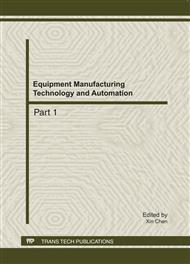p.1658
p.1662
p.1668
p.1672
p.1677
p.1683
p.1688
p.1693
p.1697
Effect of Resident Stress on the Aberration Correction Ability of MEMS Spatial Light Modulator
Abstract:
In this paper, the effect of resident stress on surface flatness and aberration correction ability of spatial light modulator (SLM) is studied. An optical simulation model based on ZEMAX software is presented to calculate the Strehl ratio of SLM. The result shows that the decrease of curvature radius can result in the decrease of Strehl ratio and aberration correction ability. Moreover, resident tensile stress and resident compressive stress have the same effect on the change of Strehl ratio.
Info:
Periodical:
Pages:
1677-1680
Citation:
Online since:
August 2011
Authors:
Price:
Сopyright:
© 2011 Trans Tech Publications Ltd. All Rights Reserved
Share:
Citation:


